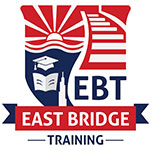Asian College of Teachers 

-
ACT Courses
- Special Education Courses
- Post Graduate Diploma in Education & Teaching (PGET)
- Early Years Care and Education
- Pre & Primary Teacher Training
- Montessori Teacher Training
- TEFL/TESOL Courses
- Ofqual Regulated Qualifications
- Nursery Teacher Training
- ITD Live Online
- ITD Online
- 1 Year International Diploma in Education, Teaching & Learning
- Inclass CPD Programs -
- Counselling Courses for Teachers
- Educational Administration & Management
- Train The Trainer Courses
- Degree Courses
- B.Ed. & M.Ed. Programs
- English Courses for Teachers
- Virtual Online Teaching (VOLT)
- Diploma in Primary Education
- Specialized Programs
- TEFL Residential Program
- Approved Qualification Courses
- International School Experience Program
- School Association Program




















